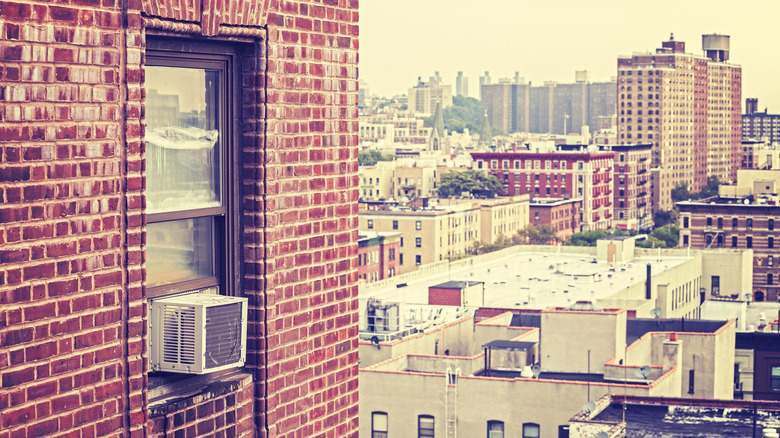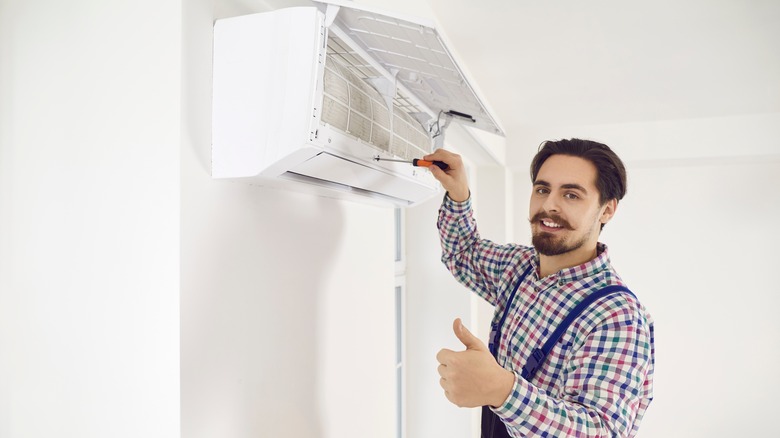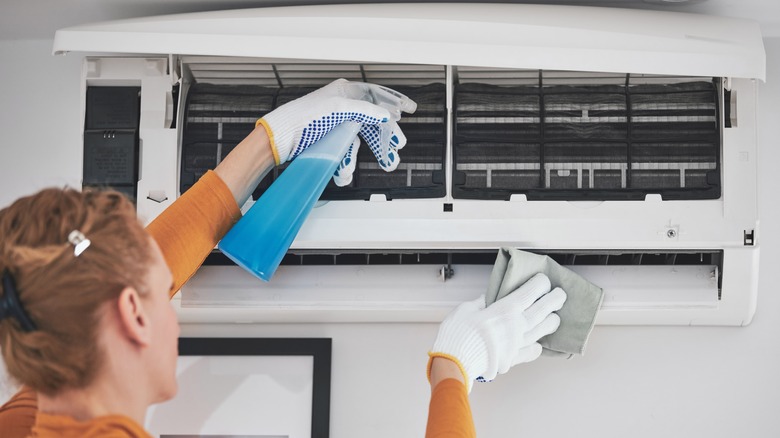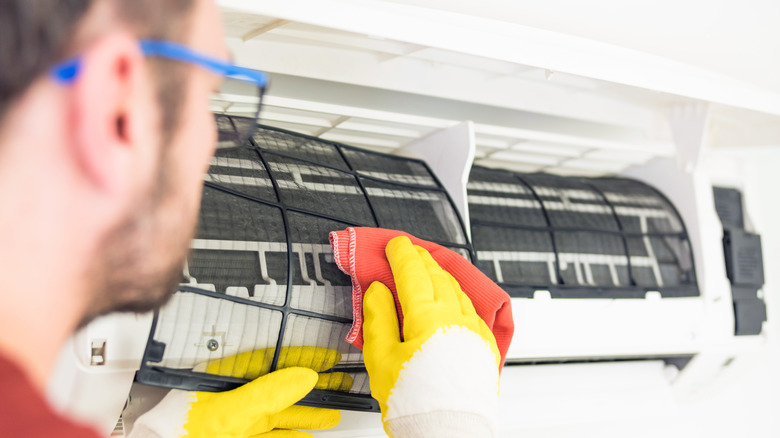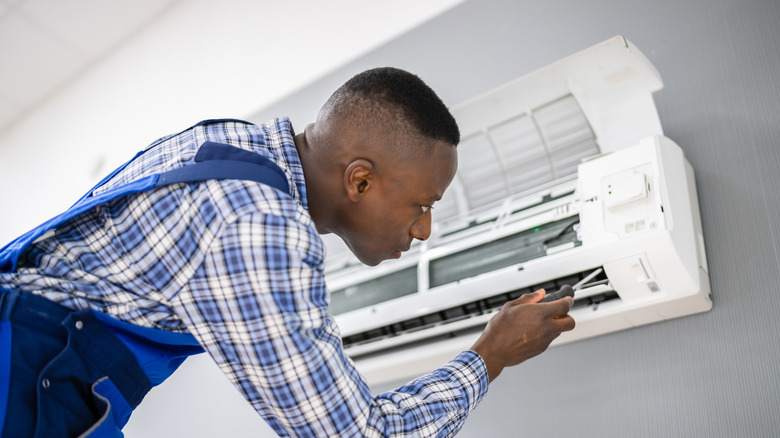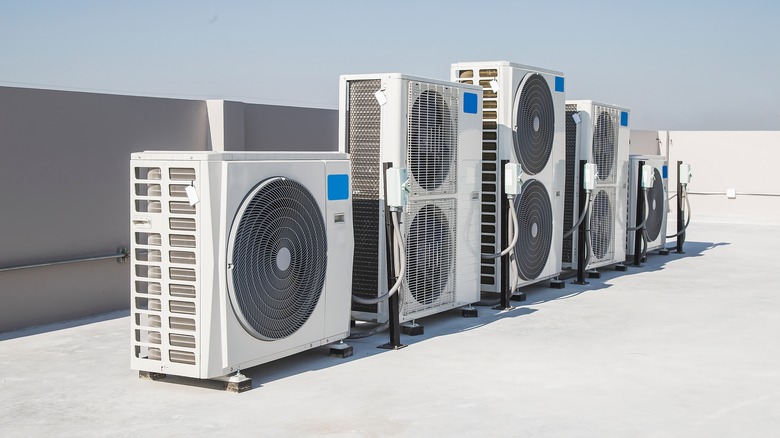5 Pointers For Properly Storing Your Air Conditioner During Cooler Months
Significant temperature drops, snowflakes, and cold and brownish leaves are popular signs of the cooler months coming right ahead. Whenever the hotter days start to fade away, the needs for your space, body, and even appliances change as well. That being said, your cooling systems will be left to hibernate for a while until it's needed again unless it's designed to allow reversible airflow.
You cannot afford to leave your air conditioner to itself during the cooler months. Although it may not be the major need of the moment, you need to store them properly to avoid any fault development later. According to AQM, leaving your AC open during the cooler months will accumulate water on its inside, which may eventually turn to ice during extreme cold. Arista also says the accumulation of dust and dried leaves can clog up the condensation coil of your AC at this period. To solve the question, 'How do I keep my AC safe during cooler months?' we have compiled all the top pointers to help you keep your cooling systems safe during the cool months. Enjoy the read and, of course, take action.
1. Inspect for internal damages
Your AC, just like other everyday appliances, requires good maintenance and periodic inspection for damages. When you store your faulty AC without repairs, it will aggravate the problem and affect the output when it's seriously needed, says Energy Saver. A classic case of a stitch in time saves nine, don't you think? Here are some telltale signs to look out for.
One common sign your AC requires some repairs is when it blows hot air (via Budget Heating & Air Conditioning). Remember, it's meant to keep the room cool, so when it's oozing out hot or warm air, you need to check it. Dirty air filters, low refrigerant, frozen evaporator coils, and thermostat problems are some of the major causes of this anomaly. The experts at American Home Water & Air highly recommend calling a professional to check it out.
Also, All American Heating & Cooling says that if your AC is blowing warm air, it could be a result of limited airflow in your space. It also indicates a mechanical fault which could be a clogged filter or broken motor. The final malady to look out for is abnormal rattling and droning noises. This can be quite annoying, but the best part is that it can be fixed without hiring a professional because it's mostly a sign of loose parts. However, when you notice a louder whistling from the inside of your cooling system, it needs to get checked immediately to avoid severe problems.
2. Clean the inner part of the cooling system
Having fixed all the problems with your cooling system, the next step is to clean it up before storing it. This is very important because the dusty filters may become a haven for molds and other microorganisms, which will be unleashed in your home once it's switched on.
The first step to take before cleaning the AC is disconnecting it from the power source. Your safety matters a lot, and defaulting in this regard causes severe electrical accidents. Once you're done disconnecting the AC from the power source, proceed to open the unit up. Your cooling device should have an opening leading to the coil, locate this and loosen the screws to access the internal part, writes David LeRoy Plumbing.
The next steps can trigger allergies, so we'd recommend you have a mask, gloves, and goggles on for protection. Get a brush and a coil cleaner to get the dirt off completely. Although there are store-bought cleaners, a good DIY cleaner can be made by mixing water, a little dish soap, and baking soda (via Breathe Better Air). Clean the AC drain pan as well and cover the unit back.
3. Clean the outer part of the AC
It is integral to clean the AC exterior as it houses spider webs, debris, dried leaves, and thick dust, which would eventually damage your cooling system, writes Cool Zone Air Conditioning & Heating. To get these off your cooling system, a wet-dry vacuum can suck out the stuck dirt. Next up, clean out the condenser fins. According to AireServ Heating & Air Conditioning, these are the metal lines responsible for moving warm air away while the AC is on, accumulating heavy dust. To clean this, gently swipe in and out the fins area to get the dust off. Next, carefully check each fin and ensure they are straightly lined in their space. If not, use your hands or a fin comb to unfold them (per Gadget Review).
The last part you want to consider is the air filter. This is particularly important because it can restrict the amount of airflow, increase your energy consumption and ultimately damage your cooling system when clogged with dust, says American Home Water & Air. If you're using a replaceable air filter, remove it to get the dust off. Next, we'd advise you to vacuum clean briefly before washing with light soap and water. After this, leave to dry for a while before reinstalling.
4. Uninstall the AC
Now that it is all clean, it's time to store the device. But just before that, you need to remove the AC from its connection spot. First, you need to remove any extra paddings and wooden or plastic panels that may be around the system. After this, separate the outer sides from the inner part by unscrewing the copper pipe connecting both ends. Before doing this, XtraSpace suggests spreading a piece of towel or placing a bucket under the AC to avoid water spilling everywhere. Remove and place gently on a flat surface.
There may be some parts outside you need to remove, like parts that were holding your unit in the window. If it's higher than your reach, you'll need a ladder and help to keep safe (via Do It Yourself). If your unit is a wall rather than a window unit and you need to block a hole, If there's a hole in your wall, it's advisable to keep it blocked by using cement or builder's putty for temporary use, says Lob Pro.
5. Store your AC
It's the last stage of your process, but we consider this the most important of all. There are tons of creative ways you could come up with for storing your AC, but the main deciding factor is that it should be stored somewhere safe (per Entek HVAC). When it comes to safety, a good way to assure this for your cooling system is by placing it in its original box. If you still have the box still hanging around in your home somewhere, take it out and get it all cleaned up. Before placing the air conditioner in the box (if available), you should maintain an upright position (via Cielo). Any wrong placement aside from this can damage the compressor, creating a need to purchase and install new spare parts.
Can't find your box? An alternative to uninstalling and looking for a perfect box fit for the AC is covering up at the original spot. You can decide to wrap up with plastic wrap or nylons. While this is a good one, you should avoid these materials because they can lead to a buildup of mold in the AC motor. Instead, Arista suggests using a breathable material and placing ply on its upper surface to prevent damage from heavy ice, rocks, et cetera.
